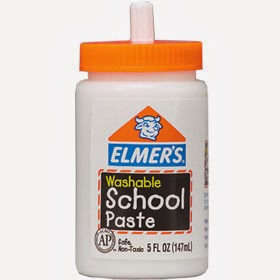After finding the
inspiration online, my dear ECE friend and I decided that we too wanted to make new and interesting blocks for children to explore... out of noodles! Not the pasta kind, the kind you take to the pool with you! I read a blog post about the idea and was instantly ready to begin. I visited our
Dollar Tree right by the agency I work at and was oh so pleased to find that they had the noodles for $1. I picked up 10 in various colors and looked like a fool walking to my car with them and stuffing them into my backseat.
 |
| Not the easiest thing to carry, but well worth it! |
Megan and I got to work tonight for a professional development dinner/brainstorming session that was centered around the noodles. She came prepared with two fantastic beverages from Starbucks (oh how I love the way Starbucks sparks my creative juices and fixes anything) and I was prepared with a bread knife. Hot date, huh? Sounds more like a plot from Law & Order, but it was amazing! I started cutting and was almost more intrigued by the way the bread knife slid through the foam noodle like hot butter. I felt like I was cutting a baguette for dinner. It was truly an interesting experience. As I was cutting the noodles, it occurred to me that some of our blocks should have a slope to them. So I began cutting some of each color to have an angle (just like bread).
Then we realized that we could play with the height of the noodles as well. So you'll notice the varying heights of the noodles. Imagine the mathematic conversations you could have with a tiny human while exploring these blocks.
 |
| More bars in more places? Anyone? |
We had so much fun with these blocks that before we knew it, we had both built our own creations! We began to think about what our tiny humans might do with them in their first interactions & are quite excited to see their reactions! If you choose to do this activity & share the blocks with your very own tiny human, please post some pictures so we can scope it out!
 |
| "It looks like a gate!" |
 |
| "It looks like the city!" |
One warning with this project, the foam is likely to attract little teeth (and lots of bit marks as a result) so this may be a project that needs to be 'redone' every now and then. But even that experience is a good exploration of texture as well as cause & effect.
Happy slicing!
What You'll Need:
Pool Noodles
Bread Knife
Cutting Board
Illinois Early Learning Standards:
6.A.ECa Use concepts that include number recognition, counting and one-to-one correspondence.
6.A.ECb Count with understanding and recognize "how many" in sets of objects.
6.D.EC Make comparisons of quantities.
7.A.ECa Demonstrate a beginning understanding of measurement using non-standard units and measurement words.
7.B.EC Show understanding of and use comparative words.
8.A.EC Sort and classify objects by a variety of properties.
8.B.ECa Recognize, duplicate and extend simple patterns, such as sequences of sounds, shapes and colors.
8.B.ECb Begin to order objects in series or rows.
11.A.ECa Use senses to explore and observe materials and natural phenomena.
12.D.EC Describe the effects of forces in nature (e.g. wind, gravity and magnetism).
19.B.EC Coordinate movements to perform complex tasks.
5.A.ECd Visual Arts: Investigate the elements of visual arts.










































